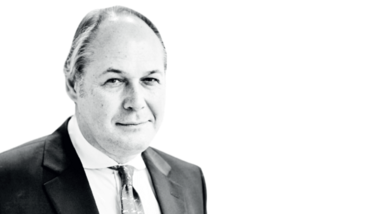The SCOPE of Things to Come
Dry AMD is no longer a disease without hope. It is your responsibility to encourage patients to seek help – and the SCOPE study is a good place to start.

Dry AMD is the most common cause of blindness among the elderly, affecting between 36 and 40 million people globally, according to the 2010 Access Economics Report. Right now, there are no approved treatments. The SCOPE study run by Gyroscope Therapeutics is a global natural history study enrolling participants at approximately 60 sites globally, including centers throughout the UK, including the London Vision Clinic (1).
It is a prospective, observational protocol designed to evaluate the natural progression of anatomical and functional visual parameters in genetically defined patients with Geographic Atrophy (GA). We plan to genotype 2,000 people – preferably more – at our network of centers throughout the country, with the goal of identifying patients with mutations in their Complement Factor I (CFI) gene. The study will allow the characterization of patient phenotype, including disease progression. It is, in a word, groundbreaking.
As far as I know, a genotyping study of this size has never been attempted before for dry AMD. We have compelling evidence that complement factors play a significant role in the condition. Now, we need to better understand the pathophysiology of GA to find a treatment for it. By genotyping such a significant number of patients, we will generate a hugely valuable dataset. We have reason to believe that we will find one dry AMD patient with a rare variant in every 30 we screen and – we might even find other variants and associations as we go. Either way, the information we get from SCOPE will be critical in guiding the current Phase 1 interventional study FOCUS, and also guide future Phase 2 studies and beyond.
As part of the SCOPE study, patients with GA are screened for eligibility and genotyped via saliva sample. Patients who are found to have a rare variant are then observed for 96 weeks, with any eligible patients offered the opportunity to participate in FOCUS (or another interventional study). The primary objective of FOCUS is to evaluate the safety of three doses of GT005 – Gyroscope’s investigational, one-time gene therapy, designed to restore balance to an overactive complement system by increasing production of the CFI protein. We have reason to believe a subset of GA patients with low CFI serum and rare variants may be best suited to treatment with GT005. We are using an adeno-associated virus type 2 vector method of CFI gene transfer (essentially, what GT005 is) to ensure sustained expression of CFI. The idea is that patients will not need to have periodic injections of CFI because their eyes will be able to rebalance the complement cascade on their own, nudging the body to produce its own therapy. This is exciting – but it will only be possible with your help.
We need as many patients as possible to join the study. Though I know some are understandably reluctant to return to clinical settings, it is crucial that we encourage our older patients with significant visual impairment to take part in this research. Our clinic takes safety very seriously and is safeguarding against every possible precaution, even offering free door-to-door transport for anyone taking part in our studies. So, what are we looking for?
Specifically, patients with significant GA – preferably confirmed by autofluorescence, with best corrected visual acuity of 34 letters or more – in late-stage disease. The reason for this is simple: we need precise diagnosis to reduce noise in data analysis. It is very possible that we will find new gene variations which will, in turn, allow us to develop new therapies.
Patients who participate in these research activities do so for their own benefit and for those to come after them. For years, patients with dry AMD have been told there was nothing that could be done – some are still being told that. It is vital that patients – and doctors – know that there is hope. I encourage you to refer patients with GA to the centers that are providing care throughout the care. We can only beat dry AMD by working together.
Information on enrolment can be found at https://www.gyroscopetx.com/patients-families/ . Patients can also call our freephone number on +44 1438 532142.
This article was originally published on The Opthalmologist. To access it click the link.
Retina Service Lead, Consultant Ophthalmologist and Vitreoretinal Surgeon at the London Vision Clinic, UK















